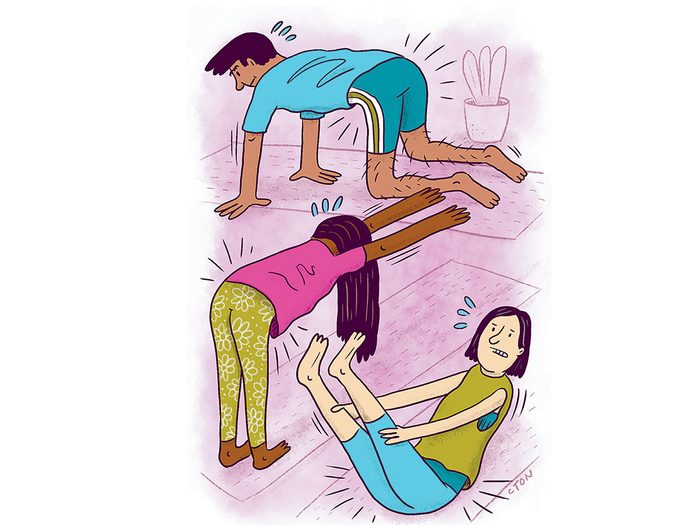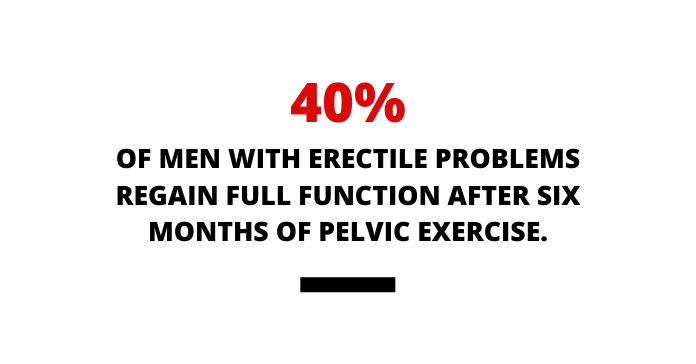Why Men Should Be Doing Kegels, Too

Want to improve your bladder control and sexual performance? Here’s why these pelvic exercises aren’t only good for pregnancy.
In the 1950s, doctors began advising women to perform regular kegel exercises—short sets of tightening and releasing the muscles in the pelvic region—in the months before and after giving birth. During pregnancy and delivery, the muscles near the uterus and bladder are naturally strained, and daily exercise of what’s called the pelvic floor can facilitate an easy recovery. Over the past decade, however, as pelvic health has become a less taboo topic, medical attention has shifted toward the importance of kegel exercises for men, as well.
Kegel Exercises for Men
Because of the historical focus on postpartum care, many people have neglected their pelvic muscles, says Nelly Faghani, a pelvic floor physiotherapist working in and around Toronto; some have even lived for years with chronic pain or incontinence without knowing where to turn. And in fact, a quarter of Faghani’s clients are men hoping to treat pelvic dysfunction.
The pelvic floor is a bowl-shaped group of muscles that extends from the pubic bone to the tailbone, acting as a basket of support for the bladder, rectum and uterus. As Olivia Drodge, a physiotherapist at Toronto’s Women’s College Hospital, puts it, pelvic floor muscles service “the basics of our human needs: bowel movements, urination and sexual function.” We use them to control the release of fluids and solids from the body, and they play an important role in achieving an erection or allowing penetration during sexual activity. They also increase blood flow through that region, and contribute to the movement of our hip joints.
Like all muscles, pelvic floor muscles can be either overactive (too tight) or underactive (too weak), leading to a variety of problems, including chronic pain, difficulties with intercourse, incontinence or organ prolapse—when the bladder, bowel or uterus sags downward or, very rarely, even falls out of the body.
One of the typical sources of difficulty is muscle weakness, and the best preventative and remedial treatment is pelvic floor muscle training, says Drodge. Some physiotherapists describe kegel exercises as similar to trying to hold back urine, then release it (to exercise the front half of the muscles), and then trying to hold back flatulence, then release it (to exercise the rear half). Practising kegel sets regularly—sometimes recommended as three sets of 10 reps every day while sitting or lying down—can make a substantial difference to pelvic health after only a few weeks.

Beyond preventing dysfunction caused by aging or pregnancy, kegels also help people recover from surgery. Approximately 80 per cent of prostatectomy patients experience incontinence issues, and a 2019 study found that pelvic floor muscle training before and after surgery improved patients’ recovery time by several months. Meanwhile, vaginoplasty patients who attended pelvic floor physiotherapy before and after surgery were about three times less likely to experience pelvic floor dysfunction than those who attended only after.
For many people, it’s a good idea to train your pelvic floor muscles regularly, and a number of health clinics have published helpful online guides on how to perform kegel exercises at home. But Drodge warns against simply starting to exercise alone without direction, particularly if you’re already experiencing some kind of pelvic dysfunction. If you don’t know what is causing problems down there, you could potentially make matters worse by exercising—for example, if your urinary incontinence is caused by overactive muscles instead of underactive ones. Your family doctor can refer you to a pelvic floor therapist who can help you determine whether kegel exercises are the right fit.
Drodge is happy about the trend toward open conversations about the pelvic floor, spurred by the rise of available information online and word-of-mouth among physiotherapy and post-surgical patients. But even for people who are perfectly healthy, she says, it’s good to “get to know a part of their body they’re not familiar with.”
Now that you know the health benefits of kegel exercises for men, find out 13 secrets your urologist wants you to know.






